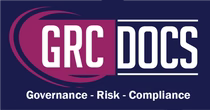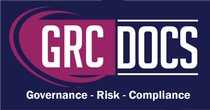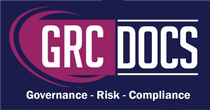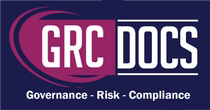The Importance Of SOC 2 Documentation In Achieving Compliance
Introduction
Achieving SOC 2 (System and Organization Controls 2) compliance is a significant milestone for organizations that handle sensitive customer data. SOC 2 audits, based on the Trust Service Criteria, assess how well an organization’s internal controls protect data across five key areas: security, availability, processing integrity, confidentiality, and privacy. An essential part of this process is creating and maintaining comprehensive SOC 2 documentation. This documentation serves as evidence that an organization’s controls are designed and operating effectively. Properly organized SOC 2 documentation helps an organization during the audit and demonstrates accountability and transparency to clients, regulators, and stakeholders. 
What Is SOC 2 Documentation?
SOC 2 documentation refers to the detailed records, policies, procedures, and evidence that an organization must maintain to demonstrate compliance with the SOC 2 Trust Service Criteria. It includes the documentation of security policies, access controls, incident response procedures, employee training, and other relevant controls related to data protection.
SOC 2 documentation helps auditors evaluate whether the organization's controls meet the necessary criteria. It also provides a clear view of how the company handles sensitive data and ensures the proper functioning of its internal security and privacy controls.
Key Components Of SOC 2 Documentation
SOC 2 documentation covers various aspects of an organization's operations, particularly those related to data protection, risk management, and compliance. Here are the primary components that organizations should include in their SOC 2 documentation:
1. Security Policies and Procedures
Security policies form the foundation of SOC 2 documentation. These policies outline how the organization protects its data, networks, and systems from unauthorized access, breaches, and other security threats. Some key policies that should be documented include:
- Information Security Policy: A high-level document that defines the organization's approach to securing sensitive data.
- Access Control Policy: This outlines how access to systems and data is restricted to authorized personnel only.
- Data Encryption Policy: Describes how sensitive data is encrypted both at rest and during transmission to prevent unauthorized access.
These policies should be tailored to align with the organization’s specific business needs and SOC 2 Trust Service Criteria. Additionally, procedures for implementing these policies, such as user access management and regular security assessments, should also be documented.
2. Risk Management Plan
A risk management plan is critical for demonstrating how the organization identifies, assesses, and mitigates risks related to data security, privacy, and availability. The risk management documentation should include:
- Risk Assessments: Regular evaluations of potential risks and vulnerabilities within the organization’s systems.
- Risk Mitigation Strategies: Steps the organization takes to minimize or eliminate identified risks, such as implementing additional security controls or changing internal processes.
The risk management plan should be an ongoing process, with regular updates and reviews to account for changes in technology, threats, or organizational structure.
3. Incident Response Plan
An incident response plan documents the organization’s process for handling security incidents, such as data breaches, malware infections, or system outages. A well-documented plan should include:
- Incident Reporting and Escalation Procedures: Clear steps for employees to report incidents and how those incidents are escalated to management or the IT team.
- Response Actions: A detailed explanation of how the organization will respond to incidents, including containment, investigation, and mitigation procedures.
- Post-Incident Review: A process for analyzing incidents after they occur to determine what happened, how it was resolved, and what steps can be taken to prevent future incidents.
Regular testing and updating of the incident response plan are essential to ensure that it is effective in the event of an actual incident.
4. Access Controls and User Management
Access control documentation is crucial to SOC 2 compliance as it helps ensure that only authorized personnel can access sensitive systems and data. Access control documentation typically includes:
- User Access Policy: Guidelines that outline how users are granted, modified, and revoked access to systems and data.
- User Role Definitions: Clearly defined roles and responsibilities for users, specifying the levels of access each role requires.
- Authentication Mechanisms: The methods the organization uses to authenticate users, such as multi-factor authentication (MFA) or password policies.
This documentation helps auditors verify that the organization restricts access based on job roles and that unauthorized users are prevented from accessing sensitive systems.
5. Change Management Procedures
Change management documentation outlines how an organization handles changes to its IT infrastructure, systems, or applications to ensure that changes do not introduce security vulnerabilities or disrupt services. This documentation includes:
- Change Request Forms: Forms that describe the nature of the change, its potential impact, and the parties responsible for implementing it.
- Approval Process: A step-by-step process for approving changes, including the review of potential security risks and compliance considerations.
- Post-Change Testing: Documentation of testing procedures to ensure that the change was implemented correctly and did not negatively impact the organization’s systems or data security.
By having a documented change management process, organizations can demonstrate to auditors that they control and monitor changes to their systems.
6. Vendor Management Policy
Many organizations rely on third-party vendors to provide critical services, such as cloud hosting, data processing, or security solutions. The vendor management policy should outline how the organization assesses and monitors third-party vendors to ensure they comply with the same security and privacy standards. This documentation should include:
- Vendor Risk Assessments: Evaluations of potential risks associated with using third-party services.
- Vendor Contracts and SLAs: Documentation of contracts and service-level agreements that detail the vendor’s security obligations.
- Ongoing Monitoring: Procedures for regularly reviewing the vendor’s performance and security practices.
Effective vendor management documentation ensures that third-party risks are mitigated and that vendors meet the necessary SOC 2 requirements.
7. Employee Training Programs
SOC 2 compliance is not solely reliant on technology—it also involves people. Employee training programs ensure that staff members understand their responsibilities when it comes to data security, privacy, and compliance. Documentation of these programs should include:
- Training Materials: Details of the topics covered in the training, such as data protection best practices, incident reporting, and phishing awareness.
- Attendance Records: Logs that show which employees have completed the required training sessions.
- Ongoing Education: A plan for continuing education on new security threats, privacy regulations, or internal policies.
Comprehensive employee training documentation shows that the organization is committed to fostering a culture of security awareness.
8. Audit Trail and Monitoring Records
SOC 2 documentation must include an audit trail that shows how the organization monitors its systems and data for unauthorized access, breaches, or other suspicious activities. Monitoring records should include:
- System Logs: Records of system events, such as user logins, changes to data, or system failures.
- Security Incident Logs: Documentation of any security incidents that occurred, including how they were detected and resolved.
- Monitoring Tools and Alerts: Details of the tools used to monitor system activity and how alerts are generated when anomalies are detected.
Maintaining an audit trail helps organizations demonstrate continuous monitoring and proactive security measures.
Why Is SOC 2 Documentation Important?
SOC 2 documentation is essential for several reasons:
- Audit Readiness: Auditors rely on SOC 2 documentation to assess the effectiveness of the organization’s internal controls. Without adequate documentation, it can be difficult to prove that controls are in place and functioning as intended.
- Client Trust: Organizations that can provide thorough SOC 2 documentation instill greater trust in clients, as it shows that they are committed to maintaining robust data security practices.
- Risk Management: Proper documentation allows organizations to track and manage risks effectively, ensuring that vulnerabilities are identified and addressed in a timely manner.
- Continuous Improvement: Maintaining up-to-date documentation helps organizations continuously improve their security posture by identifying areas for enhancement and ensuring that policies remain relevant in the face of changing threats and technologies.
Best Practices For Managing SOC 2 Documentation
Effectively managing SOC 2 documentation requires a systematic approach. Here are some best practices to follow:
- Centralized Repository: Store all SOC 2 documentation in a centralized, easily accessible repository to ensure consistency and avoid fragmentation.
- Regular Updates: SOC 2 documentation should be reviewed and updated regularly to reflect any changes in the organization’s systems, processes, or external environment.
- Cross-Departmental Collaboration: Ensure that documentation efforts involve key stakeholders from various departments, including IT, legal, compliance, and HR.
- Version Control: Implement version control to track changes to documents over time and ensure that auditors can see the evolution of policies and procedures.
- Audit Preparation: Regularly conduct internal audits to assess the effectiveness of controls and identify any gaps in documentation before the official SOC 2 audit.
Conclusion
SOC 2 documentation is the cornerstone of the SOC 2 compliance process. It provides evidence that an organization’s internal controls are not only well-designed but also operating effectively. By documenting security policies, risk management procedures, incident response plans, and more, organizations can demonstrate their commitment to protecting customer data and maintaining operational integrity. Properly managed documentation not only facilitates a smoother audit process but also fosters greater trust among clients and stakeholders, positioning the organization for long-term success.






